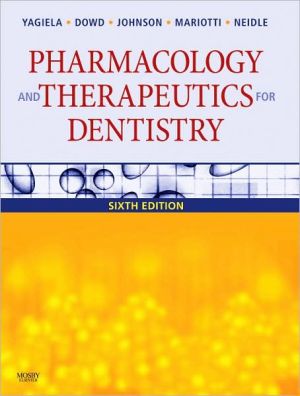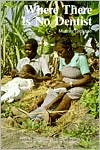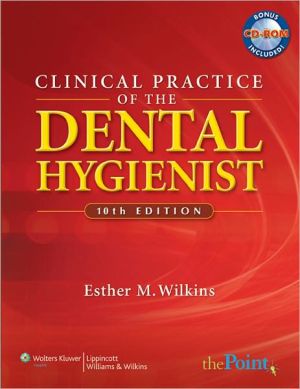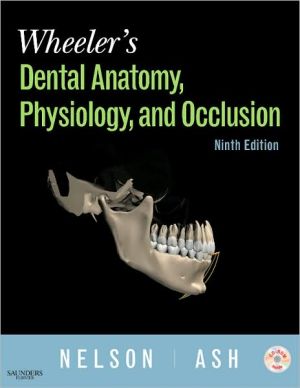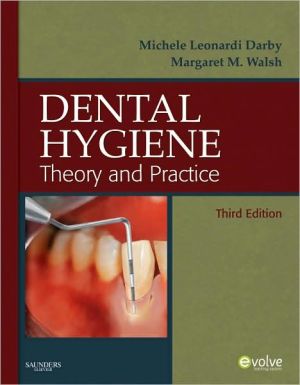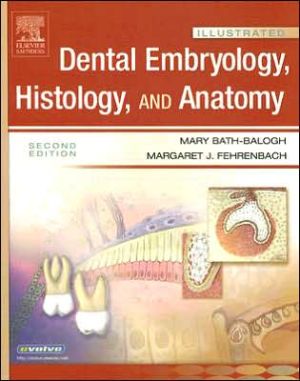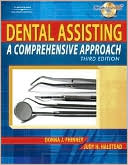Pharmacology and Therapeutics for Dentistry
Use your knowledge of pharmacology to enhance oral care! Pharmacology and Therapeutics for Dentistry, 6th Edition describes how to evaluate a patient’s health and optimize dental treatment by factoring in the drugs they take. It explores the basic fundamentals of pharmacology, special topics such as pain control, fear and anxiety, and oral complications of cancer therapy, and most importantly, the actions of specific drug groups on the human body. Whether you’re concerned about the drugs a...
Search in google:
Emphasizing the clinical application of drugs used in dental treatment, this comprehensive text covers the basic principles of drugs and their actions on the body. Providing a solid understanding of pharmacology content, it helps readers thoroughly evaluate a patient's current medical status and best optimize dental treatment in relation to overall health.· A new chapter, Introduction to Antinociceptive Drugs, discusses the important topic of pain and provides new information on mechanisms of pain and therapeutic approaches to pain.· A new chapter on serotonin pharmacology and antimigraine drugs covers the roles of serotonin and the importance of agonist and antagonists at the many serotonin receptors.· A new chapter on Alternative Medicine in Dentistry provides a current treatment of chemicals used as alternative medicines and an assessment of the potential benefits and risks of a large number of these compounds.· New information on pharmacogenetics provides the latest findings on how an individual's genetic traits affect his or her responses to drugs.· The scope of the Non-Opioid Analgesics chapter has been expanded to include non-opioid analgesics, nonsterioidal anti-inflammatory drugs, antirheumatic, and antigout drugs. · An expanded discussion of the endocrine system provides the most comprehensive coverage on the subject.· Discussions of drugs have been updated to include the latest drugs and their pharmacology.· Dental aspects of many drug classes have been expanded to include antibiotics, analgesics, and anesthetics. · The uses and mechanisms of action of drugs have been linked to the latest information on drug receptors. · Drug lists have been updated throughout the text to provide the most current information.· Website addresses have been added where appropriate to provide another avenue of drug information.· New figures help clarify mechanisms of drug action, in such areas as gastrointestinal drugs, cardiovascular drugs, and endocrine drugs.· For the first time, every book includes a free six-month subscription to Mosby's Drug Consult. Mosby's Drug Consult provides the most current, unbiased, accurate, and reliable drug information available!
PART 1: PRINCIPLES OF PHARMACOLOGY1. Pharmacodynamics: mechanisms of drug action2. Pharmacokinetics: the absorption, distribution, and fate of drugs3. Pharmacotherapeutics: the clinical use of drugs4. Pharmacogenetics and general mechanisms of drug interactionsPART II: PHARMACOLOGY OF SPECIFIC DRUG GROUPS5. Introduction to autonomic nervous system drugs6. Adrenergic agonists7. Adrenergic blocking drugs8. Cholinergic drugs9. Antimuscarinic drugs10. Drugs affecting nicotinic receptors11. Introduction to central nervous system drugs12. Psychopharmacology: antipsychotic and antidepressant drugs13. Sedative-hypnotics, antianxiety drugs, and centrally acting muscle relaxants14. Anticonvulsants15. Antiparkinson drugs16. Local anesthetics17. Principles of general anesthesia18. Agents used in general anesthesia, deep sedation, and conscious sedation19. Introduction to antinociceptive drugs 20. Opioid analgesics and antagonists21. Non-opioid analgesics; nonsterioidal anti-inflammatory drugs; and antirheumatic and antigout drugs 22. Histamine and histamine antagonists23. Drugs affecting serotonin, antimigraine drugs, drugs for other pain syndromes24. Antiarrhythmic drugs25. Cardiac glycosides and other drugs used in heart failure26. Antianginal drugs27. Diuretic drugs28. Antihypertensive drugs29. Lipid-lowering drugs30. Antianemic and hematopoietic stimulating drugs31. Procoagulant, anticoagulant, and thrombolytic drugs32. Drugs acting on the respiratory system33. Drugs acting on the gastrointestinal tract34. Pituitary, thyroid and parathyroid pharmacology35. Adrenal corticosteroids36. Insulin, oral hypoglycemics, and glucagons37. Steroid hormones of reproduction and sexual development38. Principles of antibiotic therapy39. Antibacterial and antibiotic drugs40. Antifungal and antiviral agents41. Immunotherapy42. Antineoplastic drugs43. Aliphatic alcohols44. Anticaries agents45. Antiplaque/antigingivitis agents46. Antiseptics and disinfectantsPART III: SPECIAL SUBJECTS IN PHARMACOLOGY AND THERAPEUTICS47. Analgesic use for effective pain control48. Management of fear and anxiety49. Antibiotic prophylaxis50. Oral complications of cancer therapy51. Drugs of abuse52. Toxicology53. Geriatric pharmacology54. Drugs for medical emergencies55. Prescription writing and drug regulations56. Alternative medicine in dentistryAppendix I: Drug interactions in clinical dentistryAppendix II: Glossary of abbreviations
